Understanding Electrostatic Separator Machines
Essential for industries requiring solid material purification through electrostatic processes, electrostatic separator machines employ static electricity principles to segregate particles like plastics, minerals, and precious metals based on their electrostatic attributes. These machines are invaluable for businesses seeking to reclaim valuable materials or producing high-purity items like semiconductor devices or solar cells.
The functionality of an electrostatic separator machine hinges on the triboelectric effect, where materials become electrically charged due to friction or contact with other substances. In these machines, the process involves introducing a particle mixture into a high-voltage field, prompting the particles to segregate according to their charge, with factors like particle size and shape optimizing this separation. Key components of an electrostatic separator comprise a high-voltage power supply, an electrode assembly, and a mechanism for material feeding.
Catering to a myriad of applications, electrostatic separators find utility in recycling plants segregating plastics and metals, as well as mining operations concentrating valuable minerals. Designed for efficiently processing bulk materials with precision, these machines excel in sorting materials that traditional methods may struggle with, such as fine particles or those less dense than water.
Varieties of Electrostatic Separator Machines
Electrostatic separators are available in distinct types tailored to specific requirements and applications:
-
Plate-type Electrostatic Separator: Comprising flat, closely spaced plates generating an electrostatic field, this type efficiently separates fine materials challenging to segregate using other methods.
-
Roll-type Electrostatic Separator: Material fed into a conveyor passing between two rotating rolls or electrodes is separated into conductors and non-conductors by the charge on these rolls, commonly applied in recycling processes.
-
Drum-type Electrostatic Separator: Involving a rotating drum with electrically charged elements, centrifugal and electrostatic forces work together to segregate particles, favored in mineral processing and heavy industries for durability and high capacity.
-
Corona Electrostatic Separator: Leveraging the corona discharge effect to establish an electrostatic field, this separator attracts or repels charged particles passing through the field, effective for separating minute particles but less so for larger materials.
Selecting the Right Electrostatic Separator Machine
Choosing the appropriate Electrostatic Separator Machine necessitates understanding your business's specific operational needs, considering factors like the material type to be separated (conductive or non-conductive), required capacity, and available equipment space.
For businesses handling substantial metallic scrap quantities, an Air Table Separator may prove most effective due to its efficiency in segregating materials with varying conductivity. Conversely, operations dealing with plastics and non-ferrous metals requiring high purity should opt for advanced separators like the High-Tension Separator.
The operational principle is another vital aspect to contemplate. Electrostatic Separators operate on the corona discharge principle, charging the material to be separated in the presence of an electric field to segregate particles based on their electrical properties.
Additionally, considering after-sales service support such as engineer availability and technical support is crucial for equipment maintenance during operational challenges.
Insights on Electrostatic Separator Machines from Alibaba.com
Alibaba.com, a global marketplace established in 1999 as part of the Alibaba Group, connects businesses with numerous electrostatic separator machine suppliers, offering a diverse array of products tailored for small and medium-sized enterprises (SMEs). The platform's user-friendly interface enables buyers to locate specific types of electrostatic separator machines, whether for plastic recycling or precious metal recovery, utilizing filters like 'core components,' 'machinery test report,' 'key selling points,' 'local service location,' 'applicable industries,' and even 'supplier types.'
Alibaba.com's Trade Assurance service provides payment protection until buyers confirm satisfactory delivery, ensuring secure transactions. Moreover, buyers can communicate with suppliers in their native language and benefit from features like mobile accessibility for streamlined procurement on-the-go.
Opting for Alibaba.com as your sourcing platform guarantees convenience and reliability, with a commitment to assisting businesses across diverse sectors in finding specialized equipment meeting their unique needs. Alibaba.com showcases how online marketplaces empower businesses globally by offering tailored trade solutions that foster growth and success in an ever-evolving market.
Frequently Asked Questions about Electrostatic Separator Machines
What is the purpose of an electrostatic separator machine?
An electrostatic separator machine serves to segregate materials based on their electrical properties, commonly employed in mineral processing, waste recycling, and the production of plastics and electronic components.
How does an electrostatic separator machine function?
Operating by applying an electric charge to the processed material, an electrostatic separator machine causes particles to be attracted or repelled based on their charge, leading to material separation.
What varieties of materials can an electrostatic separator machine handle?
An electrostatic separator machine can manage a wide array of materials, including minerals, plastics, metals, paper, and various charged particles.
Are there specialized electrostatic separator machines for specific materials?
Absolutely, various electrostatic separator machines are tailored for specific materials, such as heavy-duty separators for metal processing, plastic separators for recycling, and high-voltage separators for efficient mineral processing.
Can an electrostatic separator machine produce ozone?
Some electrostatic separator machines are equipped with ozone generators for air purification or water treatment processes.
What factors should be considered when selecting an electrostatic separator machine?
When choosing an electrostatic separator machine, factors to consider include the material type to be processed, required purity of separated components, operational efficiency, and maintenance ease.
How can I determine if an electrostatic separator machine suits my industry?
Evaluate the machine's specifications and capabilities against your industry requirements, ensuring compliance with necessary standards and regulations.
What post-purchase services are typically offered with an electrostatic separator machine?
Common after-sales services include video technical support, overseas machinery servicing by available engineers, online troubleshooting support, and field maintenance and repair services.
How long does it usually take to install an electrostatic separator machine?
Installation duration varies based on machine complexity and specific site requirements; accurate estimations can be obtained from the supplier.
Is training provided for operating an electrostatic separator machine?
Suppliers often offer training to ensure safe and optimal machine operation, recommending operators receive proper training before equipment use.
Can an electrostatic separator machine handle wet materials?
While many electrostatic separator machines are designed for dry materials, it's essential to review each machine's specifications for suitability in applications requiring moisture control.
Are portable electrostatic separator machines available?
Indeed, some electrostatic separator machines are designed for portability, featuring lightweight construction and carrying handles for fieldwork or multi-location operations.
How does voltage impact an electrostatic separator machine's operation?
Voltage requirements vary by machine model; matching specifications to location is crucial for proper installation and functionality.
What are the maintenance requirements for electrostatic separator machines?
Maintenance typically involves regular cleaning, checking electrical connections, and ensuring operational safety features, with some models necessitating periodic component replacements.
Can an electrostatic separator machine be customized for specific needs?
Many suppliers offer customization options for electrostatic separator machines, such as electrode configuration changes or material specification adjustments to align with processing requirements.








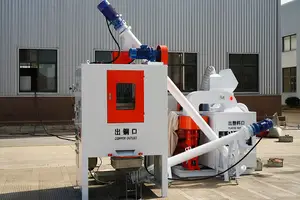

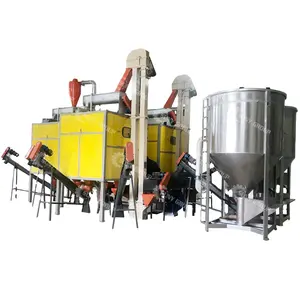


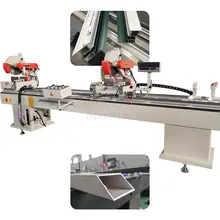

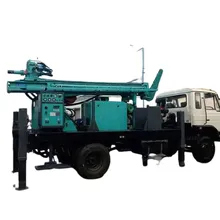
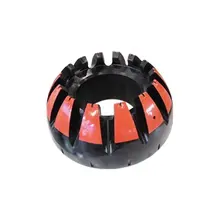
















 浙公网安备 33010002000092号
浙公网安备 33010002000092号 浙B2-20120091-4
浙B2-20120091-4